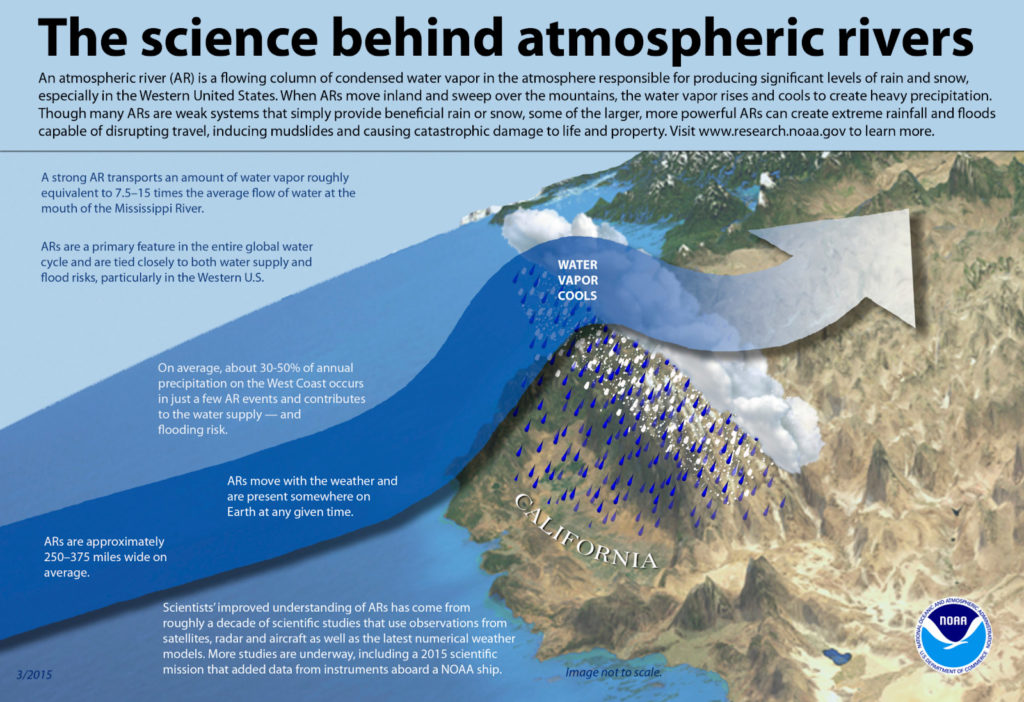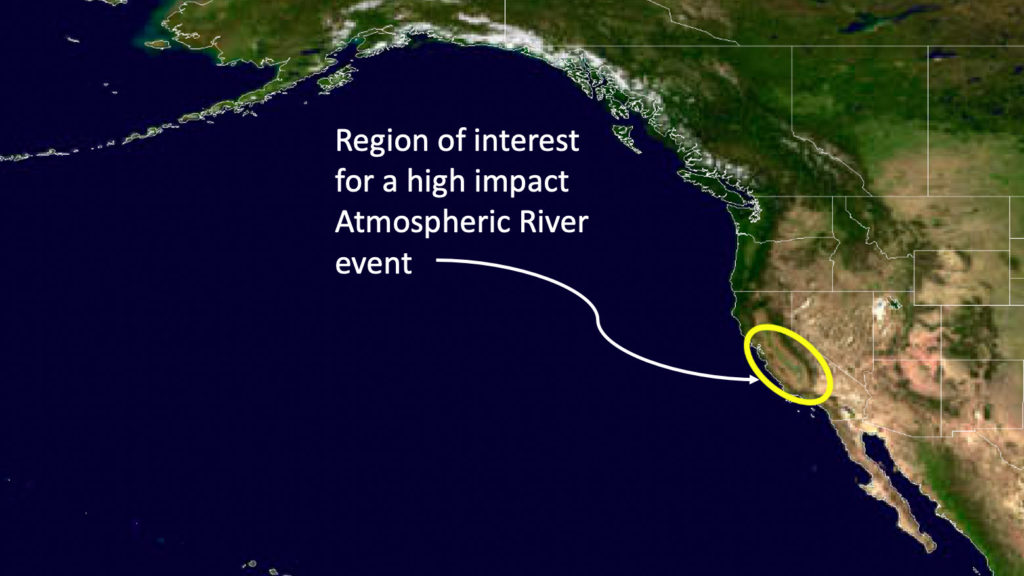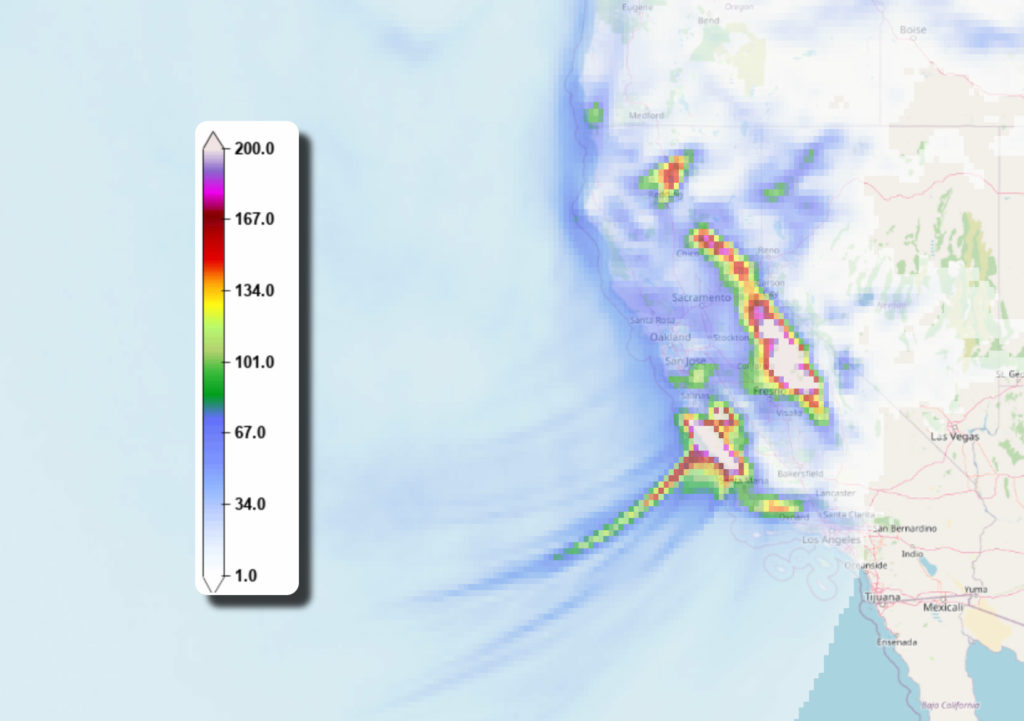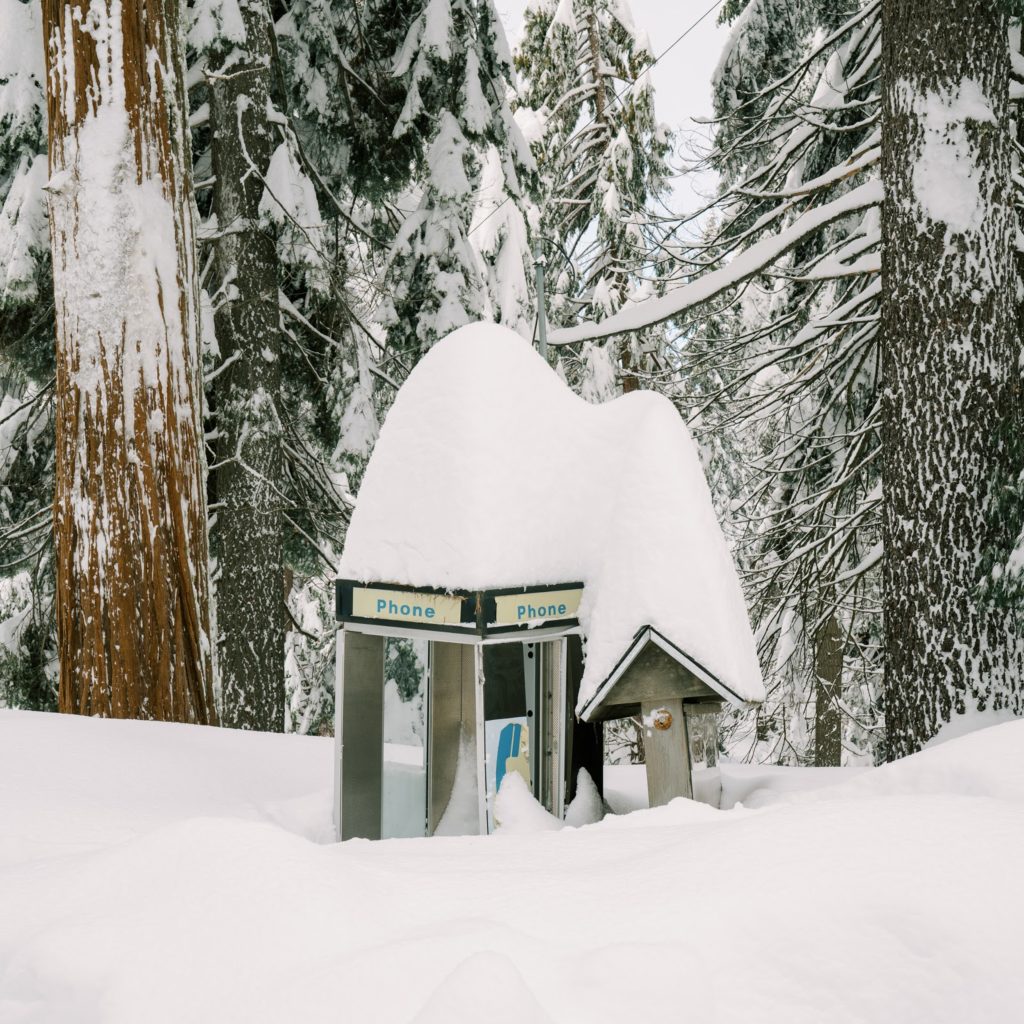Atmospheric River delivers heavy rain and high winds in California
Interested in this FREE data set?
An Atmospheric River event is currently hammering the State of California with heavy rains, high winds, and in some areas even blizzard conditions. Spire forecast models indicate that upwards of 10” of rain in lower elevations and several feet of snow in higher elevations are likely to occur between 1/27 and 1/29. This amount of precipitation can have a massive impact on the region, and has clear dangers associated with it. Winter Storm Warnings, Blizzard Warnings, Flash Flood Watches and other hazards have been posted for the entire region by the National Weather Service.
Before we look at what Spire’s weather forecast is indicating for the region, let’s first examine the basic question…
What is an “Atmospheric River”?
The atmosphere contains water vapor, and it is distributed around the world by shifting weather patterns. In simple terms, an Atmospheric River (AR) is a concentrated corridor (250-350 miles wide) of a very high amount of water vapor. These AR’s are always found around the world in various locations, but their impacts are primarily felt when an AR “crashes” onshore, especially in an area where the local topography has significant elevation increases above sea level. When the AR collides with higher terrain, the water vapor condenses and rains (or snows) out of the atmosphere, producing very high amounts of precipitation over a time span usually on the order of a day or two.
In other words, if an AR comes onshore near a mountainous region (ahem, we’re looking at you, Sierras!), you have a recipe for flooding, extreme snow, and debris or mud flows. The risk for mud flows or worse is high if the AR event occurs in areas where wildfires have recently left burn scars, leaving little to no vegetation to slow down or absorb surface water runoff.
Below is a simple graphic from NOAA explaining the characteristics of an AR:
Generally speaking, Atmospheric River events that occur in California or along the Western Coast of the US are thought of as a phenomenon that occur when tropical moisture gets pulled northward by a low pressure system. However, the moisture does not need to originate from the tropics in order to form an AR. Such is the case with the AR event unfolding over the next several days in Central California, where the moisture is originating from a region to the North instead of near the Tropics.
Let’s examine Spire’s short term forecast model, powered by Radio Occultation profiles, as we look for the following:
- Where is the AR / moisture coming from?
- How long is the event forecast to occur and what areas may experience extreme precipitation?
- BONUS question: What’s it like to experience that much snowfall?
Where is the AR coming from?
If we examine the Relative Humidity of the atmosphere at various levels above the surface, we can see that the AR moisture source appears to have been streaming in first from the Northern Pacific, plunging south around the base of the trough off the Pacific NW Coast of the US, and then coming up from the WSW straight into Central California.
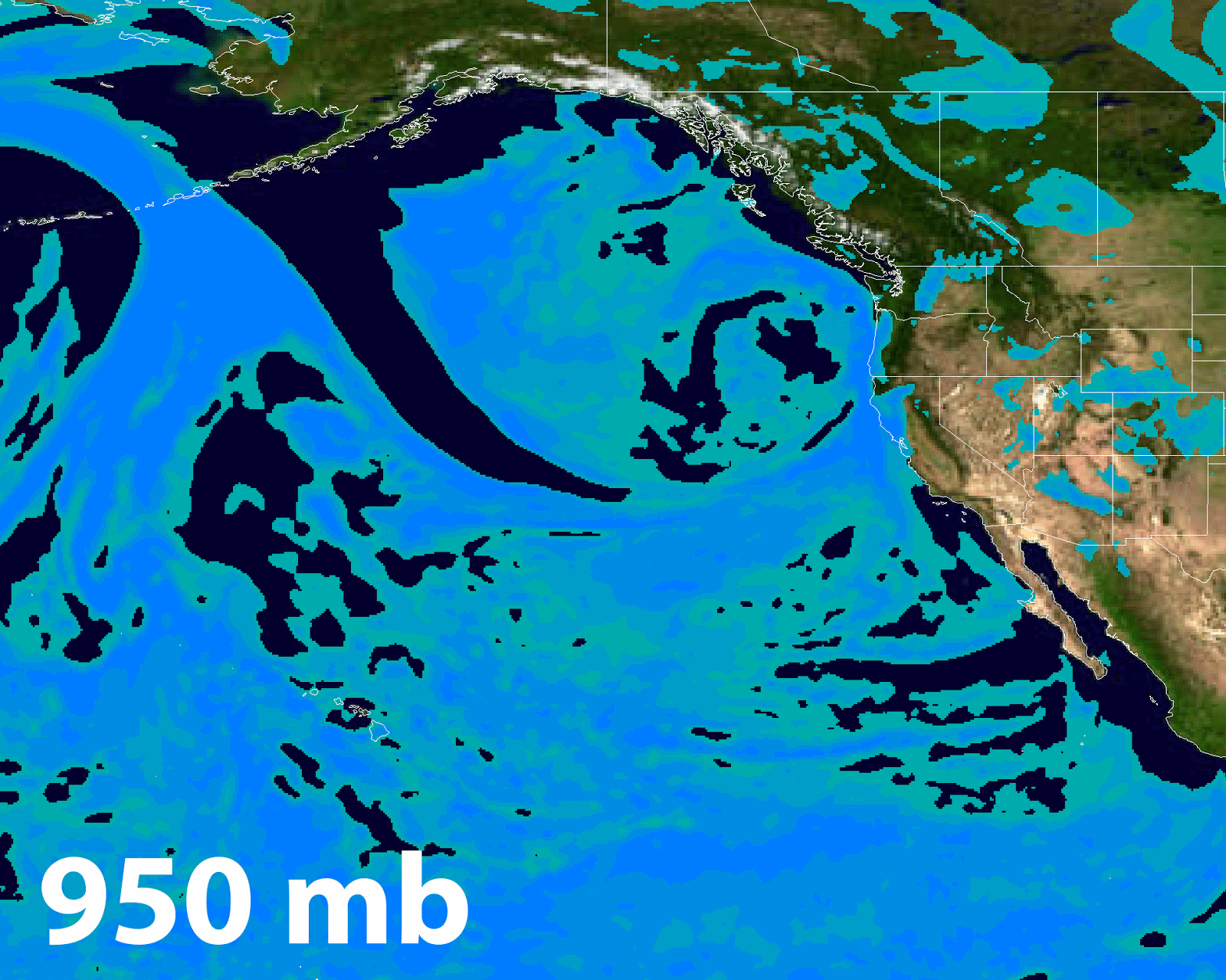
Spire Global Upper Air Forecast, 00 UTC Analysis; 01/27/2021, Relative Humidity % shaded between 80%-100%, various upper atmospheric levels 950mb to 500mb.
A still image of the 850mb layer of Relative Humidity showcases the shape and origination of the Atmospheric River the best, but the animation allows us to see that the increased water vapor has true depth to it, extending well up into the middle troposphere to 500mb.
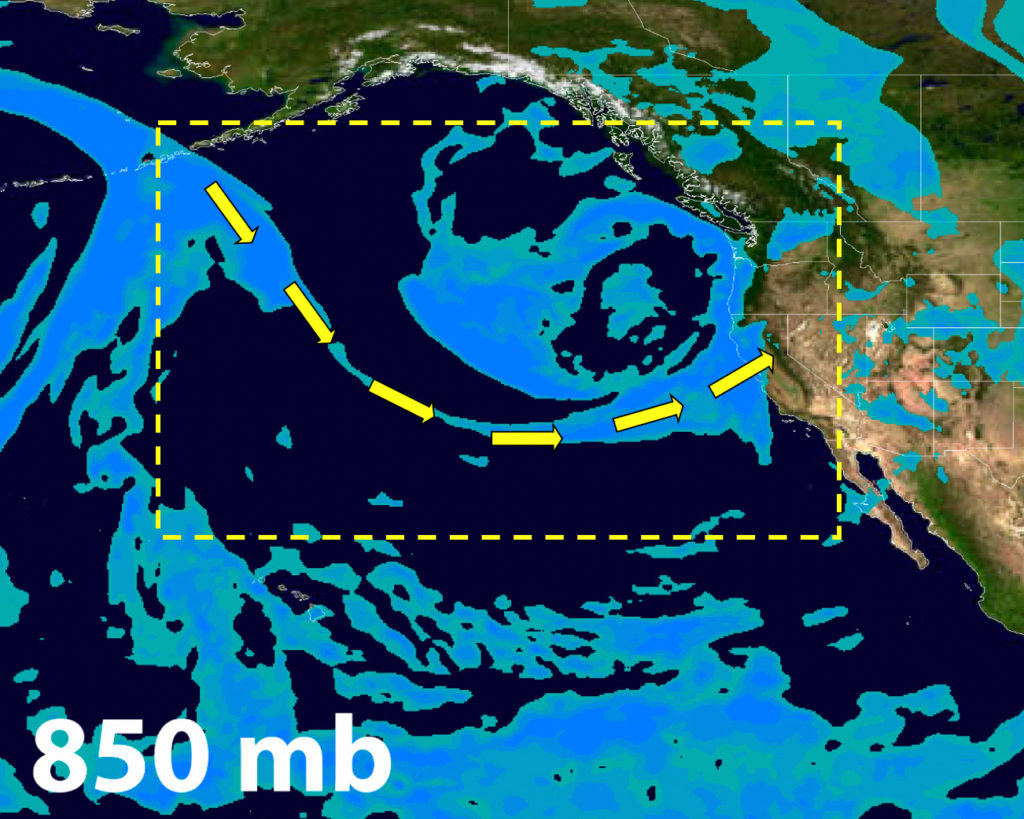
Spire Global Forecast, 00 UTC Analysis; 01/27/2021, Relative Humidity % shaded between 80%-100%, at 850mb
Now that we have examined the moisture source of the AR, let’s examine the timing and severity of the event.
How long is the heavy precipitation (AR event) forecast to occur, and how much precipitation will fall?
Let’s examine two locations in California; one near the coast and another near Yosemite National Park in the Sierra Mountains.
California Coast
The precipitation was forecast to begin overnight around 8pm local time on 1/26, lasting through the day on 1/27 and ending after sunset on 1/28. The total event precipitation forecast for this location was 202 mm, or around 8 inches of rain.
Spire Precipitation Forecast, 00 UTC initialization 1/27/21 for near Fort Hunter Liggett Military Base, CA.
Yosemite National Park
For any park-goers in Yosemite Valley, they are likely to be greeted with quite a mix of snow and rain throughout the event. Here is Spire’s precipitation (liquid equivalent) forecast for Yosemite Valley for the same time period beginning 00 UTC on 1/27:
Spire Precipitation Forecast, 00 UTC initialization 1/27/21 for near Yosemite Valley, CA.
This forecast results in about 188 mm of precipitation through 1/29/21, or 7.5 roughly inches of liquid precipitation. But we can’t measure what is going to fall in Yosemite Valley by liquid alone, as the forecast is calling for temperatures that should be below freezing in the valley floor for at least a portion of the event, with the snow totals there ranging from 5-10 inches. At higher elevations above the valley floor (4,000 – 6,000 ft), we expect the precipitation to be entirely snow, where some areas may receive up to 6 to 10 feet (yes, FEET) of snow.
Below is a map of the same Spire forecast from 00 UTC on 1/27/2021 showing total precipitation from 00 UTC through 06 UTC on 1/29/2021. Areas in the white shading are forecast to receive 200 + millimeters of precipitation for the event:
BONUS – What is it like to experience an AR snowfall event?
The author of this article happened to stay in a cabin just outside of Yosemite Valley in the upper elevations in February 2019 and experienced an Atmospheric River snowfall event firsthand. He arrived at his lodging the night of February 9th at 8pm to a moderate snow beginning, and woke up at 6am to a whopping 3 feet of fresh snow on the ground. That was enough to strand him in the Yosemite high country for a day and a half while he waited to get plowed out, and half bury an old telephone booth:
